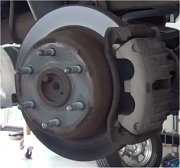Tuesday, August 18th, 2020 AT 1:20 PM
How to tell if brake pads/rotor overheating? The car listed above is an SE model built in Japan. Had terrible time locating the correct pad silver pins. Dealer wanted $22.00 apiece. After trying 3 auto part stores. Located one with matching silver clips for the brake pads. Cleaned everything. Re-greased pins. Installed everything. How do you tell if the rotor is overheating/pads sticking? Caliper sticking? Would you know the average operating temperature for these? I got a thermal temperature thermometer. They are both under 140 degrees F after driving ~5 miles. It is my wife's car and I want her to be safe. I did not try and bleed the brakes. I do not know how to correctly do it. Do you lubricate the caliper piston? You helped me with my Tahoe and I look forward to your assistance. Joe




